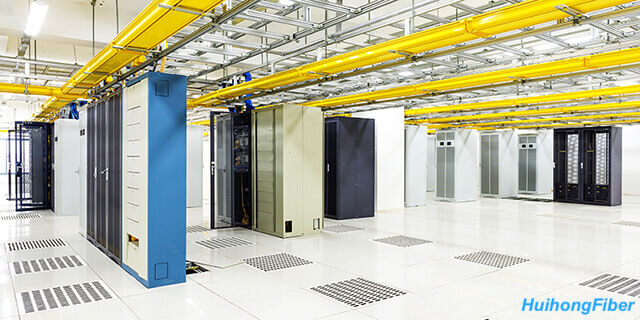Fiber has become the de facto transmission medium for data center infrastructure, thanks to its high-speed and ultra-high-density capabilities.
As people move to higher network speeds, new complexity is introduced into hybrid deployments, which technology will be adopted? Traditional three-tier networks use core, aggregation, and edge switching to connect different servers in the data center, where inter-server traffic communicates with each other in the north-south direction through active devices.
Now, however, artificial intelligence and machine learning can bring high computing requirements and interdependencies, and more of these networks are implemented using two layers of spinal and leaf-ridge networks, where servers communicate upward in East and West through production and training networks due to ultra-low latency requirements. Since IEEE introduced 40G and 100G network transmission technology standards in 2010, there have been a number of competitive proprietary solutions that confuse users who are not sure which path to follow, such as SR, multimode, LR, single-mode, and more. Both 40G and 100G use a pair of fiber optics to transmit signals between two devices.
This is a simple data transaction with two fibers, regardless of which device people use or which transceiver is installed in that device. But after IEEE approved 40G and faster network solutions, its competitors changed the game.
Two optical fibers using standard approved or proprietary, interoperable WDM technology, as well as standard approval for parallel optics using 8-core fibers (4 transmissions, 4 receives), or multi-source protocols (MSA) and engineering receptions), or 20-core fibers (10 transmissions, 10 receives) are being studied. In recent years, big data has become a national strategy. The data center industry is on the back of big data, and the boom in upgrades is on the way. Data center capacity is becoming more and more demanding, less and less optoelectronic conversion, and transportation devices are enterprised, customers are paying more and more attention to the stable reliability of network connectivity, and the pursuit of efficiency for delivery and business changes is becoming more and more urgent. Because of its efficiency flexibility and low cost, cloud computing not only enables enterprises to rapidly increase data processing power in the short term to save initial investment, but also enables enterprises to purchase on-demand to save operational maintenance costs, making cloud computing the most important data solution for enterprise data centers. As an important part of data center infrastructure, integrated cabling is facing new market opportunities.

